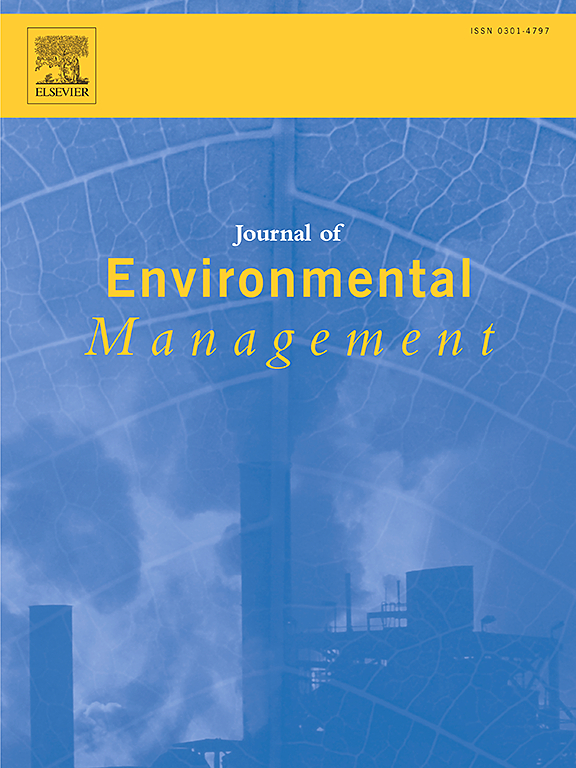Electrochemically driven inactivation of harmful cyanobacteria assisted with the visible light photocatalyst of CeO2-Fe3O4-CQDs
IF 8.4
2区 环境科学与生态学
Q1 ENVIRONMENTAL SCIENCES
引用次数: 0
Abstract
The application of photoelectrocatalysis in the inactivation of algae is attracting growing attention. In this study, CeO2-Fe3O4-carbon quantum dots (CQDs) were prepared as particle electrodes to assess their effectiveness in inactivating cyanobacteria within a three-dimensional (3D) electrochemical system under visible light. The results showed that both algal cells and extracellular organic matter (EOM) could be efficiently removed. The incorporation of 10 mg/mL CQDs significantly boosts the efficiency of photoelectrocatalysis under the optimal conditions, where the CeO2-Fe3O4-CQDs concentration is 0.20 g/L, j = 21 mA/cm2, under a neutral pH. Notably, the CeO₂-Fe3O4-CQDs exhibit favorable electrochemical catalytic performance, outstanding photocurrent responsiveness, and efficient magnetic separation (for recyclability). The coexistence of Ce3+ and Ce4+ species gives rise to the formation of a redox couple (Ce3+/Ce4+) at the interface of CeO₂, thereby demonstrating favorable performance in terms of oxygen release and storage capabilities. The activities of superoxide dismutase (SOD), catalase (CAT), and malondialdehyde (MDA) confirm the apoptosis of algal cells. Hydroxyl radicals (•OH) and singlet oxygen (1O₂) are participated in the algae inactivation process, with 1O₂ playing a more prominent role. Our research clarifies the complex mechanisms of algal apoptosis and promotes practical algae inactivation from wastewater.

CeO2-Fe3O4-CQDs可见光催化下有害蓝藻的电化学失活
光电催化在藻类灭活中的应用越来越受到人们的关注。在这项研究中,制备了ceo2 - fe3o4 -碳量子点(CQDs)作为粒子电极,以评估其在可见光下三维(3D)电化学系统中灭活蓝藻的有效性。结果表明,该工艺能有效去除藻细胞和胞外有机物(EOM)。在中性ph条件下,CeO2-Fe3O4-CQDs浓度为0.20 g/L, j = 21 mA/cm2,加入10 mg/mL CQDs显著提高了光电催化效率。CeO2-Fe3O4-CQDs表现出良好的电化学催化性能、良好的光电流响应性和高效的磁分离(可回收性)。Ce3+和Ce4+共存,在ce2界面形成氧化还原对(Ce3+/Ce4+),表现出良好的氧释放和储氧能力。超氧化物歧化酶(SOD)、过氧化氢酶(CAT)和丙二醛(MDA)的活性证实了藻类细胞的凋亡。羟基自由基(•OH)和单线态氧(102)参与了藻类的失活过程,其中102的作用更为突出。我们的研究阐明了藻类凋亡的复杂机制,并促进了废水中藻类的实际失活。
本文章由计算机程序翻译,如有差异,请以英文原文为准。
求助全文
约1分钟内获得全文
求助全文
来源期刊

Journal of Environmental Management
环境科学-环境科学
CiteScore
13.70
自引率
5.70%
发文量
2477
审稿时长
84 days
期刊介绍:
The Journal of Environmental Management is a journal for the publication of peer reviewed, original research for all aspects of management and the managed use of the environment, both natural and man-made.Critical review articles are also welcome; submission of these is strongly encouraged.
 求助内容:
求助内容: 应助结果提醒方式:
应助结果提醒方式:


